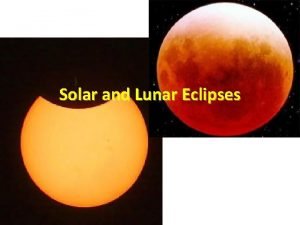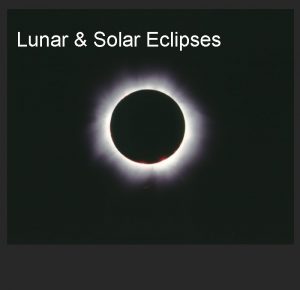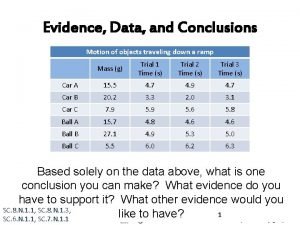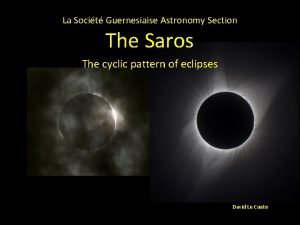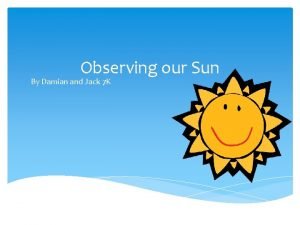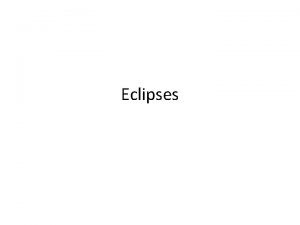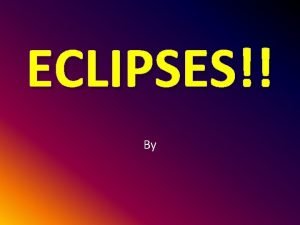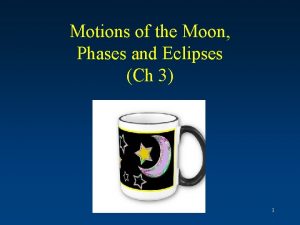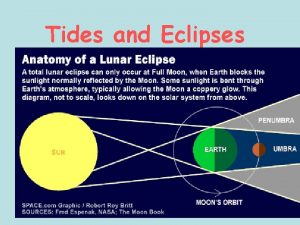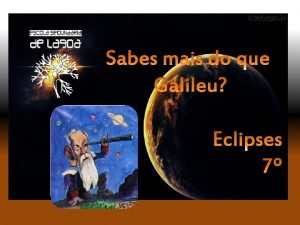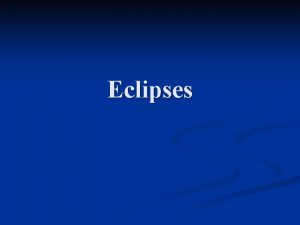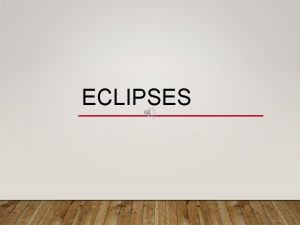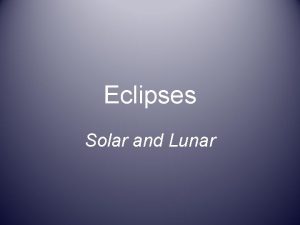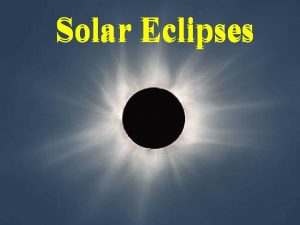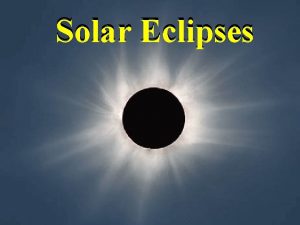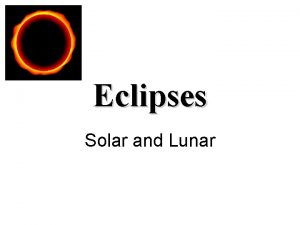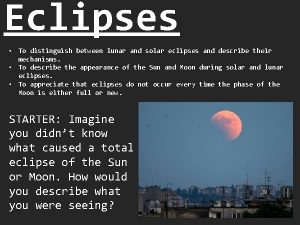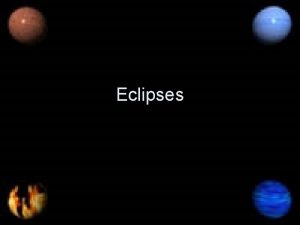Solar Eclipses What exactly is a solar eclipse














- Slides: 14

Solar Eclipses


What exactly is a solar eclipse? • What is an eclipse? • What causes eclipses and why? • How often do eclipses happen?

Phases of the Moon • The Moon is a celestial body/natural satellite that orbits Earth • The Moon does not produce its own light but reflects the Sun’s light • The Moon orbits Earth about every 29. 5 days • As it circles the Earth, the changing position of the Moon with respect to the Sun causes the moon to appear in different “phases”


The Moon’s Two Shadows • A solar eclipse can only occur during New Moon phase • If the Moon’s shadow happens to fall upon Earth’s surface during this time, there could be a portion of the Sun covered by the moon • Even though a New Moon phase occurs every 29. 5 days, we don’t have a monthly solar eclipse because the Moon’s orbit is tilted 5 degrees • At least twice a year, the geometry lines up just right for an eclipse for part of Earth

The Moon’s Two Shadows • The Moon has two different parts to its shadow • 1) Penumbra – faint outer shadow; partial solar eclipses visible • 2) Umbra – dark inner shadow; total solar eclipses visible • When the penumbral shadow strikes Earth, we see a partial eclipse


Total Solar Eclipses • If the Moon’s inner (umbral) shadow sweeps across Earth, a total eclipse can be seen • The path the inner shadow moves across Earth is called the Path of Totality • The path is only about 100 miles wide • To see a total eclipse, one must be inside the path • It’s very rare to see a total solar eclipse twice in one place • Ex: Princeton, NJ had a total solar eclipse in 1478. Next one will be 2079!


Totality • The total phase of a solar eclipse is very brief, usually only a few minutes • During totality, the corona can be seen (ring around the Sun)

Annular Solar Eclipses • Not every solar eclipse is a total eclipse • Because of the elliptical (oval) shape of the Moon’s orbit, the Moon is sometimes too far away to completely cover the Sun in the sky • When this happens, the Moon appears smaller and leaves a larger ring around the edge. • This type of eclipse is called an Annular Solar Eclipse • Annularity can last as long as a dozen minutes


Works Cited • "Espenak, Fred. “Solar Eclipses for Beginners. ” Mr. Eclipse. com, http: //www. mreclipse. com/Special/SEprimer. html. Accessed 10 August 2017.
 Differentiate between lunar eclipse and solar eclipse
Differentiate between lunar eclipse and solar eclipse Solar lunar eclipse
Solar lunar eclipse Conclusion
Conclusion The two eclipses
The two eclipses Types of eclipses
Types of eclipses Lesson 2 moon phases and eclipses answer key
Lesson 2 moon phases and eclipses answer key Eclipse brainpop
Eclipse brainpop The two eclipses
The two eclipses Moon phases and eclipses
Moon phases and eclipses What type of tide occurs at a lunar and solar eclipse?
What type of tide occurs at a lunar and solar eclipse? Eclipses and tides lesson 3
Eclipses and tides lesson 3 The sun-earth-moon system worksheet answers lesson 1
The sun-earth-moon system worksheet answers lesson 1 Facts about first quarter moon
Facts about first quarter moon Características de sonido
Características de sonido The two eclipses
The two eclipses
